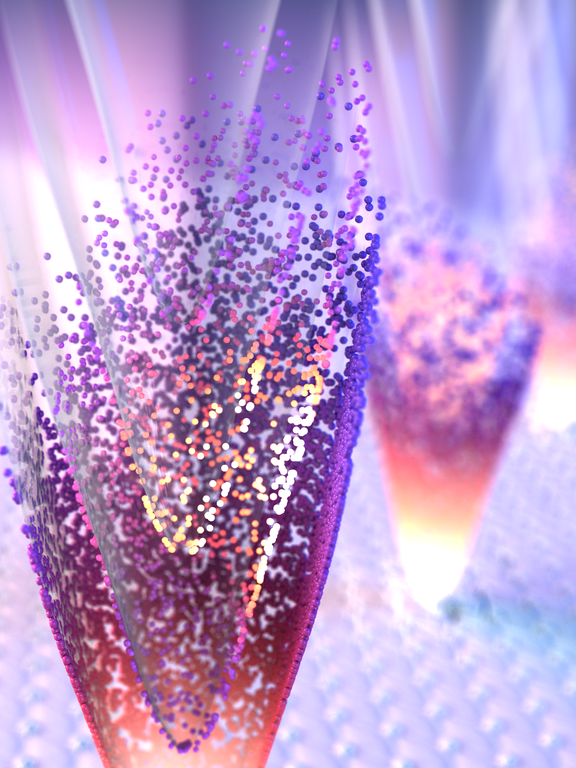When electrons dress up in light
The text is based on a press release from Philipps University Marburg / University Regensburg / MPSD, with insertions and modifications from Paul Scherrer Institute.
New material properties, at lightning speed and on demand - this vision is fuelled by recent findings of a Europe-wide physics research group including Paul Scherrer Institute PSI. The team uses ultra-short and strong light fields to directly observe how exotic energetic states, so-called Floquet bands, form in a crystal. The scientists report their findings in the research journal Nature.
“The discovery of new material properties usually depends on our ability to control the chemical composition of the material,” says Ulrich Höfer, professor of experimental physics at Philipps-University Marburg and visiting professor at the University of Regensburg. “The purely optical manipulation of material properties, on the other hand, could take physics into a new era by enabling new functions on demand.”
Exciting electrons periodically with strong light leads to exotic quantum effects: The periodic perturbations from the strong light field cause the electrons to have not just one fixed energy state, but many evenly spaced energy states. “The original energy state surrounds itself, as it were, with several envelopes of light,” explains Rupert Huber, professor at the Institute for Experimental and Applied Physics at the University of Regensburg and joint lead author. Experts refer to this state as a Floquet state. “However, the dynamic properties of such states – for example, the question of how long it takes the electrons to ‘clothe’ themselves with light – have remained unknown until now,” Huber elaborates.

When electrons (spheres) in the surface of a topological insulator are accelerated by strong light waves according to their band structure (lowest cone), Floquet-Bloch replicas (higher cones) of the original band structure are formed. (Image: Brad Baxley, parttowhole.com)
Reference
S. Ito, M. Schüler, M. Meierhofer, S. Schlauderer, J. Freudenstein, J. Reimann, D. Afanasiev, K. A. Kokh, O. E. Tereshchenko, J. Güdde, M. A. Sentef, U. Höfer & R. Huber, Build-up and dephasing of Floquet–Bloch bands on subcycle timescales. Nature 616, 696–701 (2023). DOI: 10.1038/s41586-023-05850-x
Low-volume newsletters, targeted to the scientific and industrial communities.
Subscribe to our newsletter